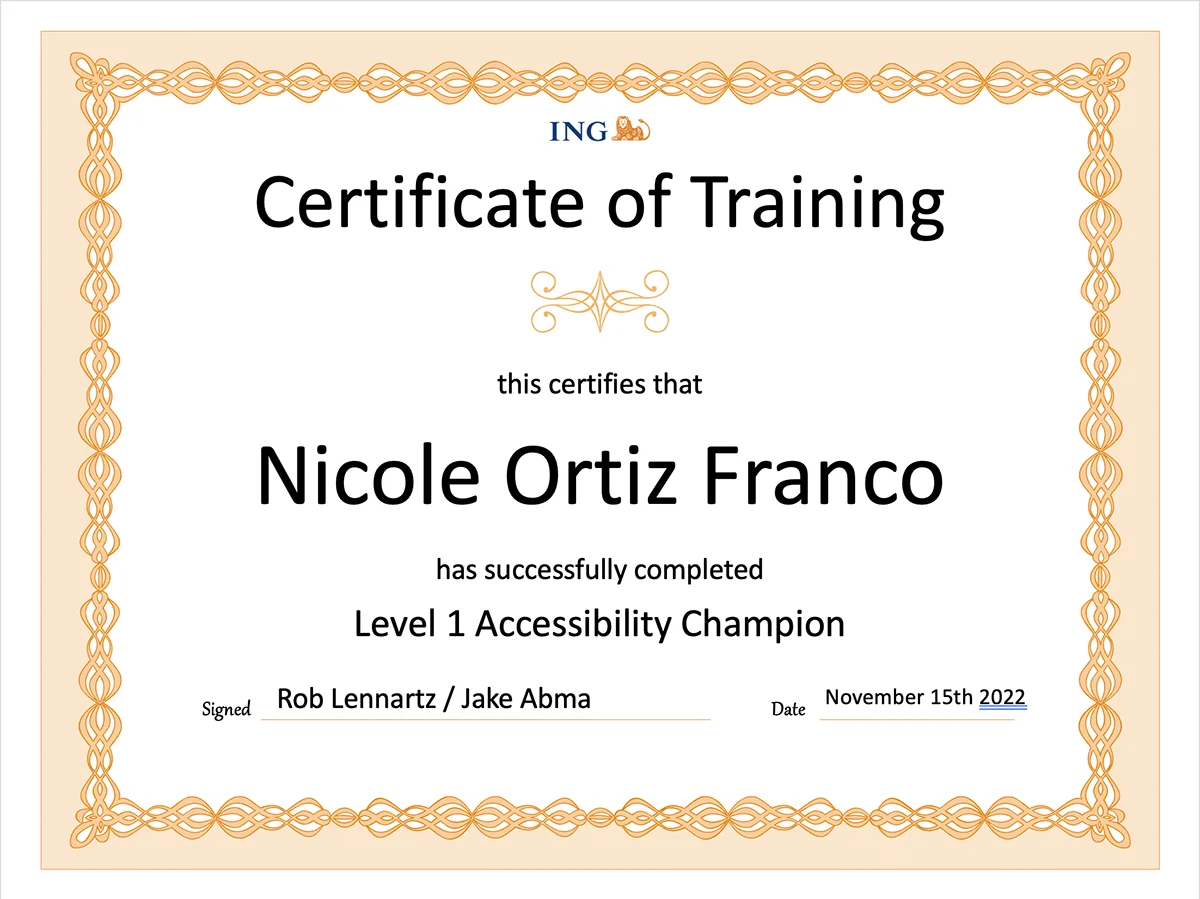Accessible Design: A11y insights
 accessibility a11y inclusion
accessibility a11y inclusion Accessibility certification
During my time at ING, I noticed that my colleagues were all taking an accessibility course at Deque University. This course had three levels, and all designers were required to achieve at least level 1 by 2022. Interns were typically not eligible for this course due to the costs, but I was so interested in accessibility that I persuaded my manager to let me take the course on the condition that I would complete it by 2022. And of course, I did!
Understanding my role in A11y from the start
As a designer, my role in accessibility begins at the very inception of a project. It’s crucial to understand how different users, including those with disabilities and those using assistive technology, will interact with our products. I’ve learned to better anticipate their needs and ensure that no barriers exist. For example, some users don’t use a mouse. A sighted user with a mouse and a blind user with a keyboard will interact with your product differently. Therefore, as a designer, it’s important not only to focus on the design itself but also on the people who will use it.
When you get to know your users, you realize that the idea of an “average user” is outdated. Therefore, it’s important to focus on designing for extreme or stress cases instead, and in doing so, you’ll naturally address the needs of the vast majority of users.
Meeting A11y for design
This course aimed to provide UX and UI designers with insights into the role they play in the accessibility of digital content. It offered a broad overview of role-based accessibility considerations and techniques. Here’s what I learned and why it’s important:
- Accessibility: Understanding how to make digital content accessible to everyone, including people with disabilities.
- Compliance: Ensuring designs meet legal and regulatory standards. Universal vs. Inclusive Design: Learning the difference between a one-size-fits-all approach and designing specifically for diverse user needs.
- Error Prevention and States: Designing interfaces that prevent errors and clearly indicate when errors occur.
- Predictability and Consistency: Creating consistent and predictable user experiences. Timing and Preservation: Ensuring that users have sufficient time to interact with content and that important information is preserved.
Incorporating these principles into my design work has been transformative. By focusing on accessibility from the beginning and considering the diverse needs of all users, I strive to create more inclusive and user-friendly digital experiences. This dedication to accessibility not only enhances the usability of my designs but also ensures that they can be enjoyed by everyone, regardless of their abilities.
Implementing accessibility in my work
Given the complexity of the WCAG guidelines and the dense nature of the theory, I made the material more digestible by summarizing key findings for myself. This approach not only helped me retain the information but also allowed me to quickly reference important points as needed, or look them up when explaining concepts to others. Fellow designers often ask to see my document, and I’m glad to share this knowledge, making accessibility more accessible for everyone.
What I have come to understand more clearly now is that if you follow a few steps from the very beginning of your design process and conduct thorough research on your target audience, incorporating accessibility into your work is not difficult at all.
← back to portfolio